- On leaf, facing
- Male sub adult 230111_FWNP
- Male adult 230111_FWNP in alcohol
- Male adult 230111_FWNP palp
- From above
- Facing
- Facing
A beautiful ambush-hunting Araneid found on the leaves of green shrubs throughout Australia including Tasmania. Identifiable by the two large, yellow, roughly circular blobs in the anterior third of the upper surface of the abdomen, which has a series of white blobs within black blobs, like a very coarse dotted line, all around the outside margin. The remainder of the abdomen and cephalothorax reddish orange to brown. Black eyes on the rather hammerhead-shaped face are distinct. This group of spiders hunts by waiting on foliage and ambushing insects at night, usually well camouflaged in the day, often on the undersides of green leaves. The strong spines on the inside of legs I and II may be for protection and for seizing prey. Rear legs are much smaller and often translucent yellow. Males and females share the same colouring and patterning. The egg sac in January-February is a salmon pink sphere suspended on a stalk of several silk threads from the undersides of ferns or other low foliage. The outside of the sac appears woven as if with looping threads. This species is the most common of its genus, quite abundant in better-quality habitat but rarely noticed. Arcys, the generic name sometime used, was in error. Arkys with a k was the name erected by Walckenaer in 1837. The species name lancearius refers to the triangular spear head or heart-shaped, pointy bit fastened onto the end of a lance. ♀ 8mm ♂ 5mm
On leaf, facing
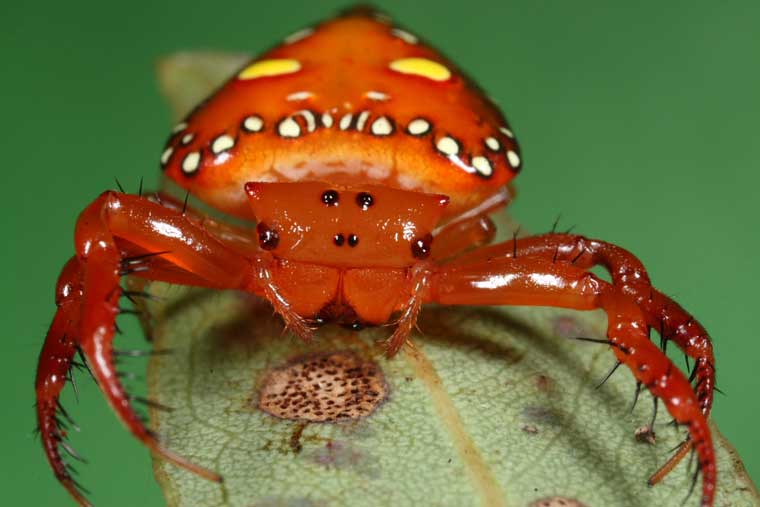
Male sub adult 230111_FWNP
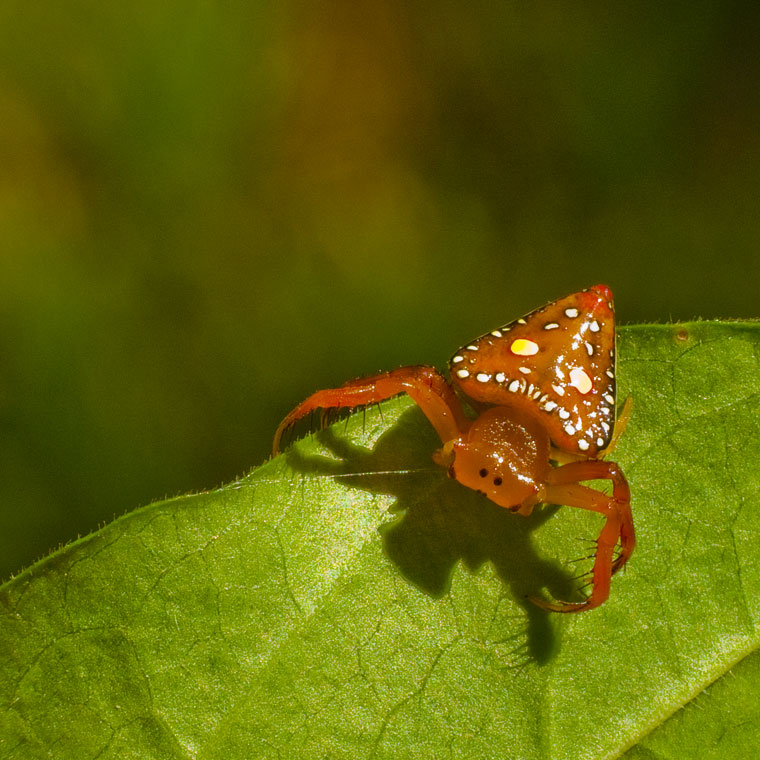
Male adult 230111_FWNP in alcohol
This male moulted in captivity to mature to its final stage.
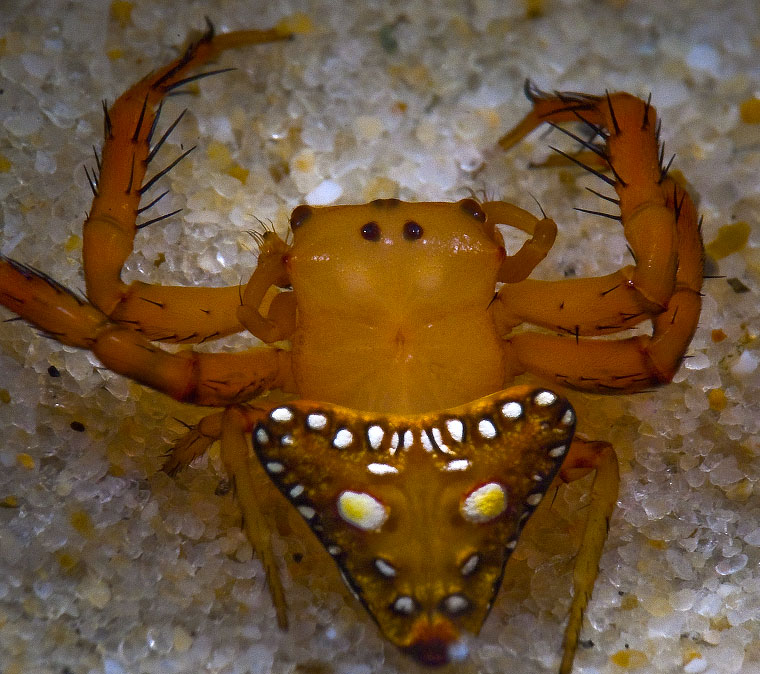
Male adult 230111_FWNP palp
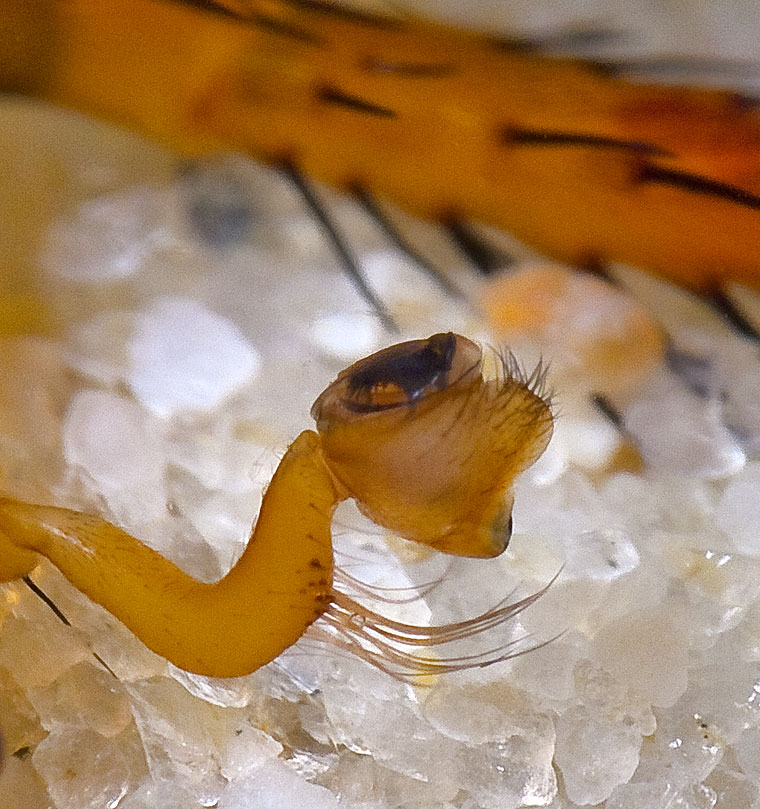
From above
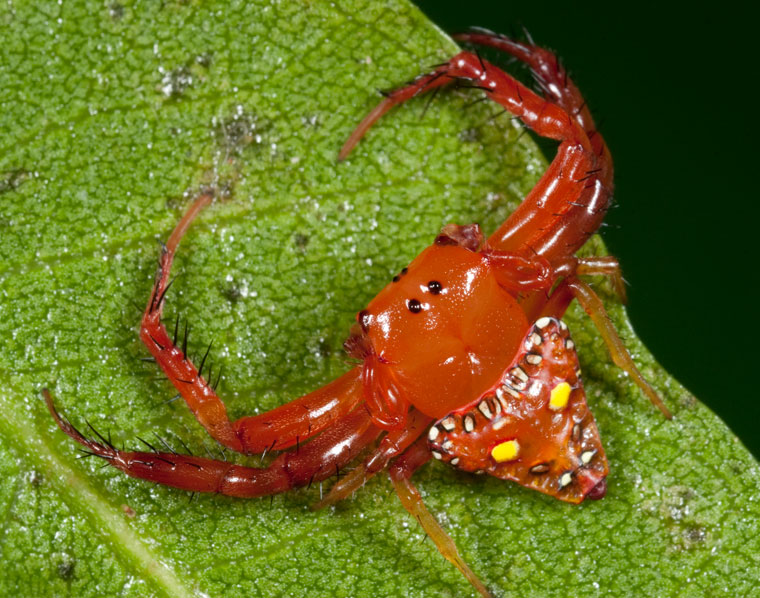
Facing
Female 02-Mar-08 West side Lake Samsonvale Q Open woodland.
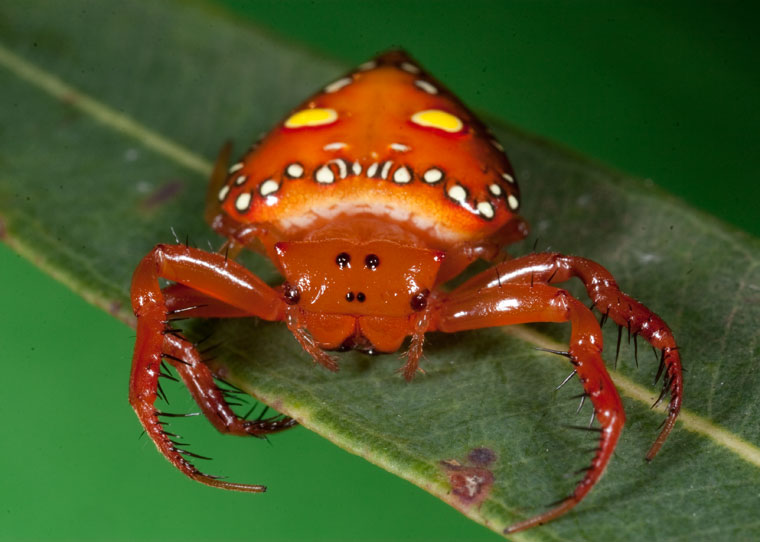
Facing
16-Jan-10 West side Lake Samsonvale off Samford-Dayboro Road on Black Wattle leaf.

- New Archemorus [Arkys] species Balogh 1978 - Acta Zoologica Academiae Scientarium Hungarieae 24, 1978